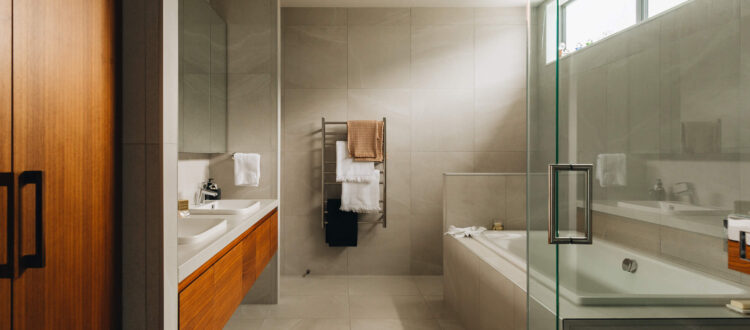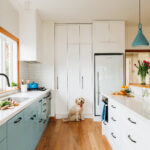Things to Consider When Planning a Bathroom Renovation
Getting started on a new bathroom? Our bathrooms are highly practical spaces that also can offer sanctuary, refresh our bodies and spirits and express our personalities. Bathrooms are second only to kitchens in being high investment and high value spaces in our homes.
Planning these spaces is both fun and challenging. We want to make the most of the square metres available to us, incorporate good product choices and thoughtful design features, and execute our plan with quality craftsmanship to ensure the space continues to work well, be easy to clean and look great well into the future.This is the first of a three-part Bathroom Design Series aimed at helping you through this process. To get started, here’s some of the broader aspects to think about for your new bathroom:
PRACTICALITIES AND PLANNING
Budget — costs to build and renovate in mid-COVID NZ are growing before our eyes, yet renovating rather than moving remains a favourable choice for many. Whilst the fluidity in the market makes it harder to accurately anticipate costs, it is still a worthwhile exercise to set some spend parameters and check those against other’s real life and recent experience. Look at case studies, ask your friends.
Plumbing — before you go too far, understand the opportunities or limitations with your particular property’s plumbing. You may or may not be able to move fittings too far from where they are currently or changes could add more cost than the budget allows.
Water Pressure — your property will have either a low/unequal or mains pressure water system and it’s worth knowing which before you select your tapware. A sign that your pressure system is low/unequal is if your cold water flow is greater than your hot and if this is the case, choose tap ware that equalises the flow.
Your brief — designing for who will use this space and what other bathroom facilities are in the home will be at the core of your decision making. The sole bathroom for a busy family will have quite different priorities to a master bedroom ensuite. Be clear about what purpose this room will serve and your guiding principles will keep you on track.

LAYOUT
Space planning is best when it’s done alongside an understanding of desirable key features. Not only do you want your layout to make the most of floor space and create a well flowing, open feeling space, you also want it to create opportunities for design features that add additional utility and make it feel special, for example, a well a placed storage and display ledge, the perfect wall for a feature tile or place for a mirror that maximises natural light.
Incorporating natural light will make a room look and feel more open. To let the light flow whilst maintaining privacy consider clerestory windows, skylights, patterned or frosted glass or louvres. Windows also help with air flow, alongside mechanical extractors.
Layout of a small space can be tricky and no manner of expensive fittings or finishes will fix a carelessly laid out bathroom. Generally speaking it is considered poor to open your bathroom door and face the loo, your shower is tall and should be placed so as to not block visual or physical flow and you want to be able to move freely around your vanity and easily access storage. You will have your own pet peeves and lessons learned from other’s mistakes so set yourself up with your room and key features to scale… or give a specialist a call.

BUILDING CONSENT
Increasing the number of sanitary fixtures in your bathroom or installing a tiled wet area shower are two activities that definitely require local council consent and a set of drawings to facilitate that process. If you are not sure if your bathroom renovation is exempt or requires consent, you could start with this link: https://buildit.govt.nz

WATER SAVING
Water Efficiency Labelling Scheme (WELS) labels are displayed on new products and provides information on water consumption and efficiency. Each product label displays a star rating out of six with more stars indicating greater water efficiency. Labels also provide litres per minute (for showers and taps) or per wash or per flush so you can compare between products in more detail. Aerators and flow regulators to reduce the volume of water used can be fitted in mixer taps also.In additional to thoughtful product choices, your plumbing system can be set up with water efficiency in mind. Installing a pressure limiting valve, flow restrictors, and minimising pipe runs from water heating appliances to high demand sections of the home are all things you can discuss with your plumber to find out if efficiency gains can be made with your renovation.

Our next article ‘Ideas to Customise your Bathroom’ provides a low-down on your bathroom product choices.
If you would like to get in touch about a bathroom or other interior design project, we would love to hear from you.
Feel free to give me a call on 027 474 9194 or email frances@honourcreative.com. And for interior design inspiration, please take a look at some of our recent residential interior design projects.
You can also download our FREE resource, 12 Top Tips for the Ideal Interior Design Brief, a handy guide to developing your interior design brief, an essential part of the interior design process.




